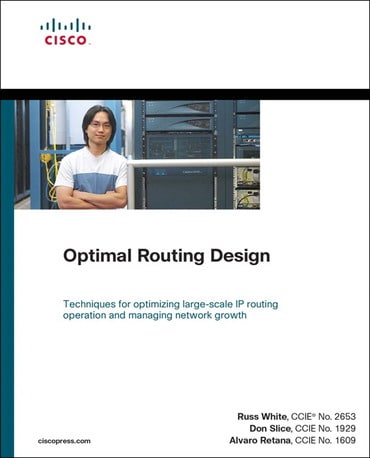Switch content of the page by the Role togglethe content would be changed according to the role

Optimal Routing Design, 1st edition
Published by Cisco Press (June 7, 2005) © 2005
- Russ White
- Alvaro Retana
- Don Slice
Paperback
$54.39
Price Reduced From: $67.99
ISBN-13: 9781587142444
Optimal Routing Design
Published 2005
Need help? Get in touch